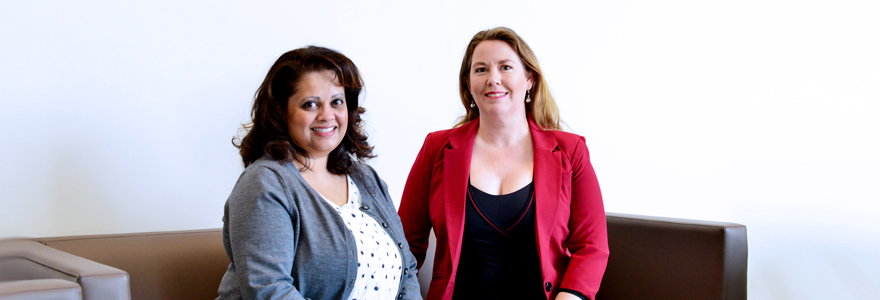Two-Eyed Seeing: The gift of multiple perspectives

By Emily Leighton, MA'13
Etuaptmumk is a Mi’kmaw word meaning Two-Eyed Seeing. With one eye, we view the world through Indigenous ways of knowing and with the other eye, we view the world through Western, or Eurocentric, ways of knowing.
A guiding principle for intercultural collaboration, Two-Eyed Seeing provides the gift of multiple perspectives. “It encourages the realization that beneficial outcomes are much more likely in any given situation when we are willing to bring two or more perspectives into play,” writes Mi’kmaq Elder Albert Marshall, who developed the concept.
Two CIHR-funded research projects at Schulich Medicine & Dentistry are embracing this approach, incorporating community perspectives and knowledge to advance equity in health care and training for Indigenous communities.
Maria Mathews,
To create an assessment framework, the research team will review existing evaluations, complete a literature review and facilitate deliberative dialogue, a form of focused discussion, to engage Indigenous community partners, program participants, medical trainees and program organizers.
“While counting the number of Indigenous physicians and trainees may seem to be the best way to measure success, these programs may have important impacts on participants, including on those who are not able to become physicians,” she explained.
Mathews started this research at Memorial University, and the second phase of the project will use the new assessment framework to evaluate Memorial’s Aboriginal Health Initiative program. She says the project will be relevant to medical schools across the country, as well as other health professions.
“Ideally, we hope our findings will guide decisions about how best to attract and support Indigenous students in the health professions,” she said.
“My commitment to advancing health equity in policy and practice often leads me down non-traditional pathways,” she said. “Rather than being an objective observer, I am committed to developing partnerships with people working within the health care system to ensure my efforts are guided by their needs and can help advance meaningful change.”
Called "Engaging for Change: Building Culturally Safe Care through Indigenous Narratives,” Wylie’s CIHR-funded project is aimed at improving the ability of health care organizations to meet the needs of Indigenous people. Her work will complement local initiatives by supporting and evaluating common interventions, including relationship-building and engagement, storytelling and training and implementing
Wylie’s team in London will be joined by a team in Thunder Bay, led by Dr. Lana Ray, an Anishinaabe scholar and assistant professor in the Department of Indigenous Learning at Lakehead University.
“The growing commitment to reconciliation has created new imperatives and initiatives within health care systems to advance equity for Indigenous people,” said Wylie. “Support for this type of research will advance knowledge and an evidence base on successful and sustainable strategies.”
“Although our study is focused on Ontario, this work is relevant not only for








